Abstract
Pulsed Nd laser experiments in suspensions of the purple membrane of Halobacterium halobium are carried out at room temperature. At sufficiently high laser intensities, a photostationary mixture of bacteriorhodopsin (BR) and its red-shifted (batho) photoproduct (K) is obtained. The spectra of the first three intermediates in the photocycle are reported. The data yield a value of phi1/phi2=0.40 +/- 0.05 for the ratio of the quantum yields of the forward (phi1) and reverse (phi2) processes, setting an upper limit of approximately 0.4 for the quantum efficiency of the cycle at room temperature. This method is generally available for the determination of phi2 in the case of a photoequilibrium: A in equilibrium B, where B is a short-lived transient and phi1 is known from low intensity measurements. Its potential application is of importance for the study of the photophysics of visual pigments at physiological temperatures.
Full text
PDF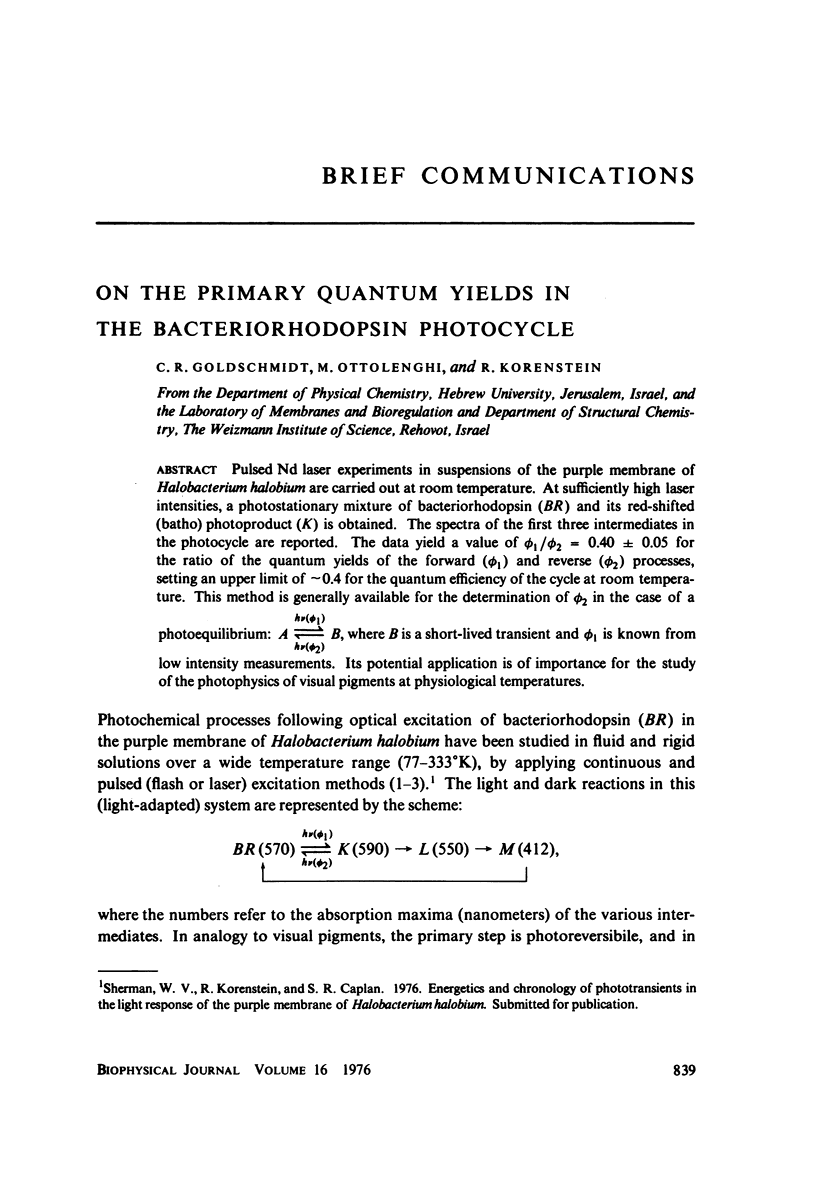
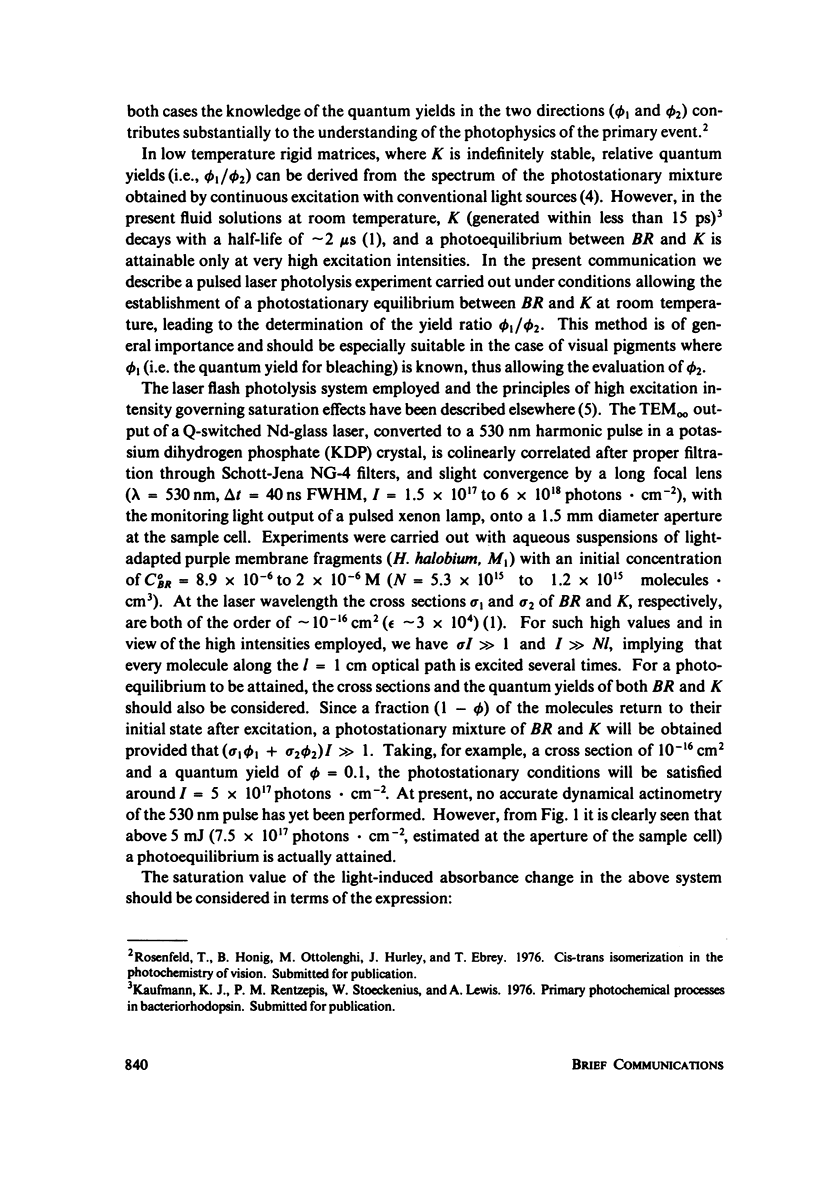
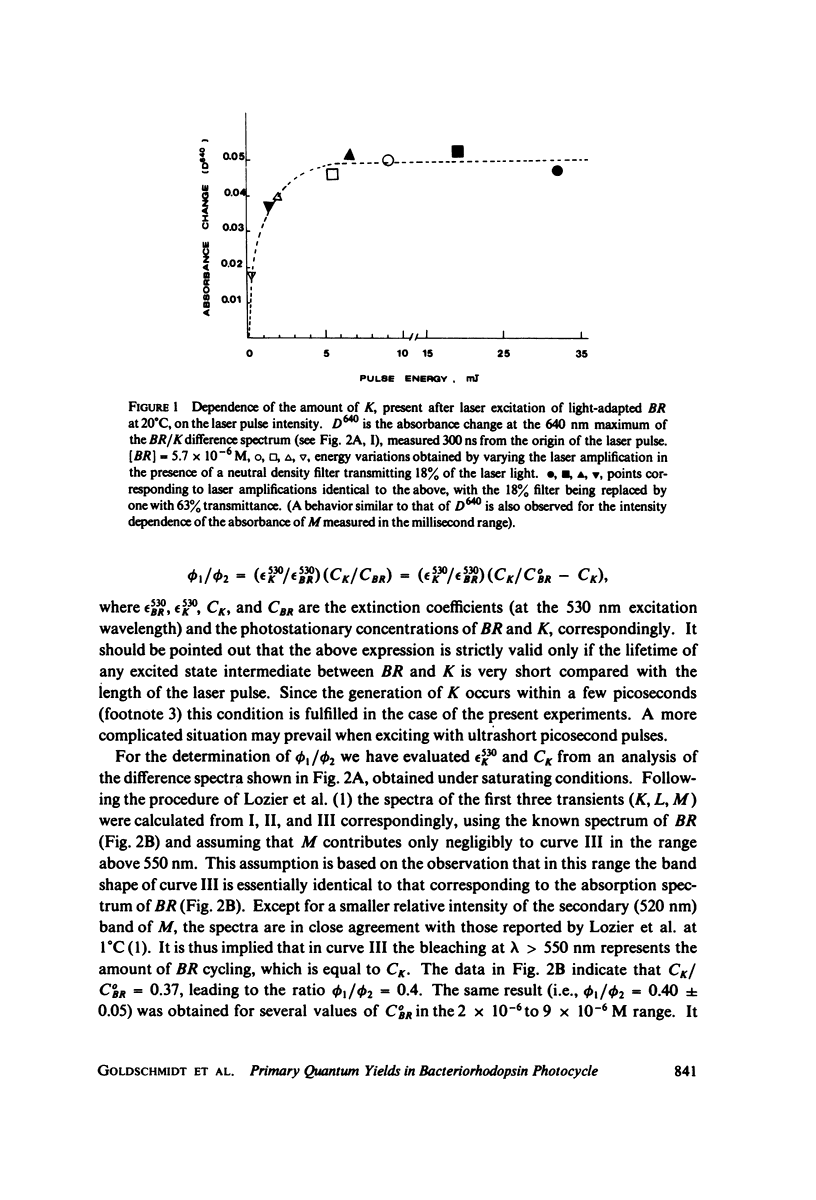
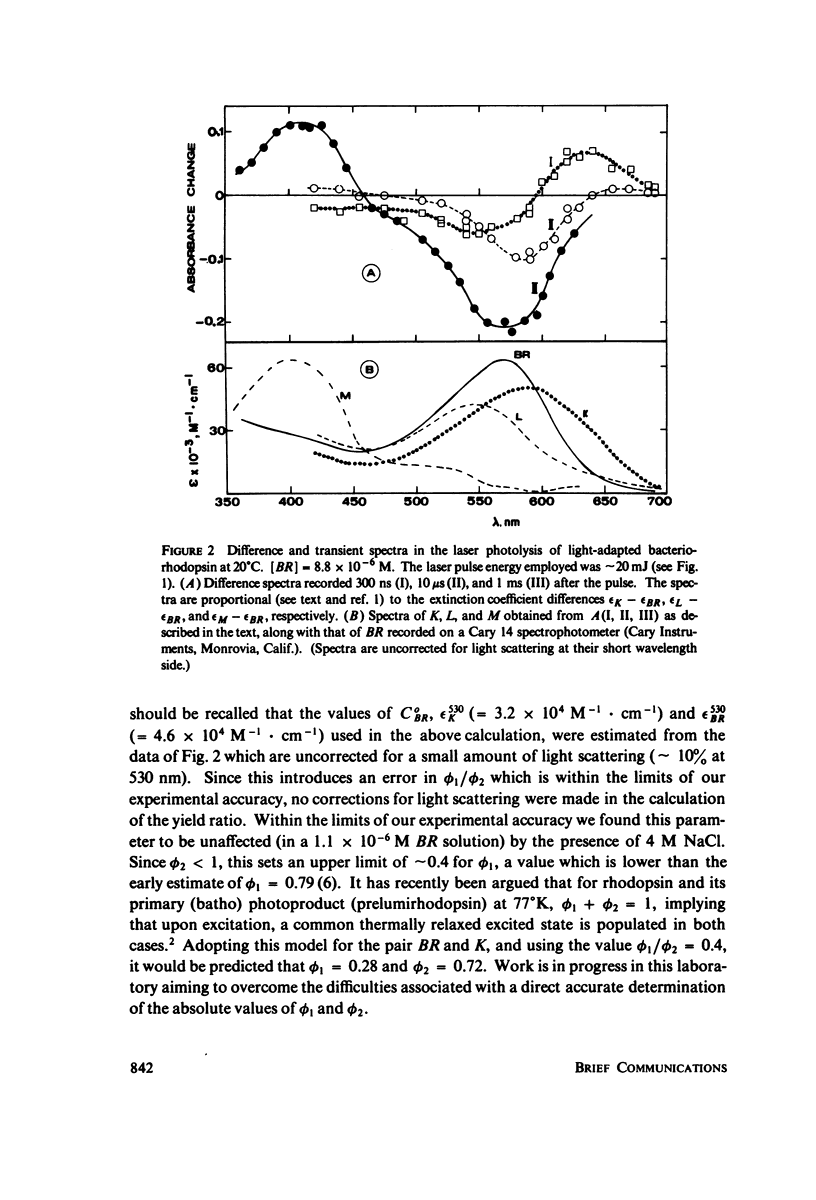
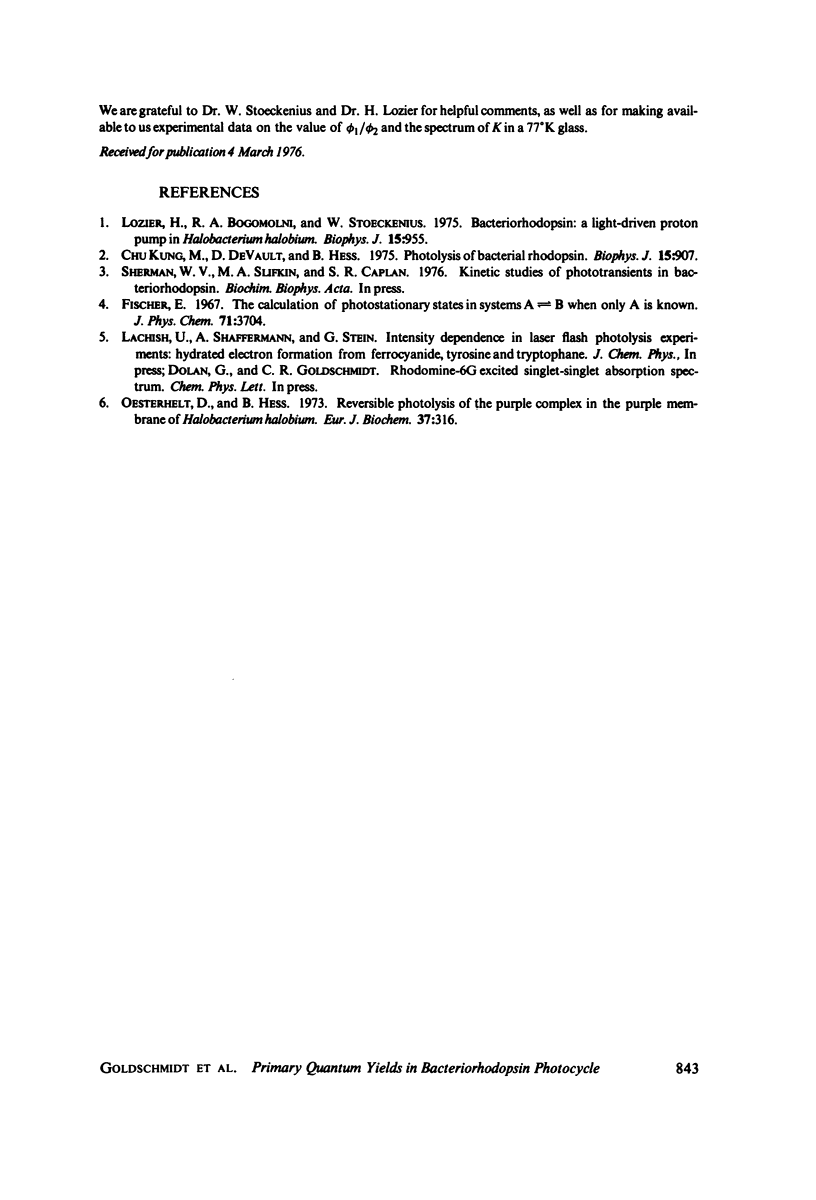
Selected References
These references are in PubMed. This may not be the complete list of references from this article.
- Chu Kung M., DeVault D., Hess B., Oesterhelt D. Photolysis of bacterial rhodopsin. Biophys J. 1975 Sep;15(9):907–911. doi: 10.1016/S0006-3495(75)85864-4. [DOI] [PMC free article] [PubMed] [Google Scholar]
- Lozier R. H., Bogomolni R. A., Stoeckenius W. Bacteriorhodopsin: a light-driven proton pump in Halobacterium Halobium. Biophys J. 1975 Sep;15(9):955–962. doi: 10.1016/S0006-3495(75)85875-9. [DOI] [PMC free article] [PubMed] [Google Scholar]
- Oesterhelt D., Hess B. Reversible photolysis of the purple complex in the purple membrane of Halobacterium halobium. Eur J Biochem. 1973 Aug 17;37(2):316–326. doi: 10.1111/j.1432-1033.1973.tb02990.x. [DOI] [PubMed] [Google Scholar]


